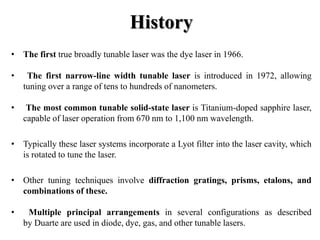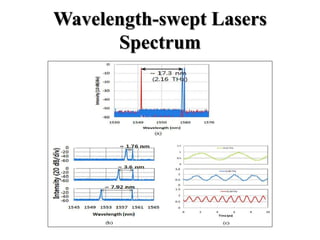The document provides a comprehensive overview of tunable lasers, including their definitions, historical development, types, and applications in various fields of science and technology. It details significant advancements in tunable laser technology, such as solid-state, dye, and semiconductor lasers, while highlighting their impact on laser spectroscopy, optical communication, and other applications. The document also discusses various tunable laser suppliers and the potential for future innovations in the field.




































